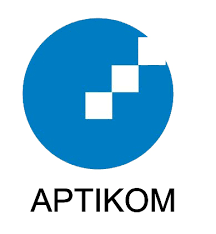Analysis and Visualization of High School Student Achievement Data Using Decision Tree and Cross-Validation in Rapidminer
DOI:
https://doi.org/10.18196/eist.v4i2.20731Keywords:
Data Visualization, Decision Tree, High School Student Achievement,Abstract
The vision, mission, and work indicators of high school education are all geared toward producing graduates of excellent quality. Students’ academic performance in the first and second grades indicates their eventual excellence as graduates. However, it is not feasible to ensure that students in the third year have good results only by comparing their academic achievements during the first and second grades. School leaders and policymakers can benefit from data analysis and visualization by gaining insight into recurring patterns and emerging trends in their stored data. Leaders and management at schools can benefit significantly from Rapidminer’s decision tree and cross-validation data analysis methods when trying to figure out what to do about students performing well or poorly academically.
References
Anam, M. K., Pikir, B. N., & Firdaus, M. B. (2021). “Application of Na ࡇÕ Ye BaeV Classifier, K-Nearest Neighbor (KNN) and Decision Tree to Analyze Sentiment in Netizen and Government Interactions” (In Indonesian). MATRIKࣟ: Jurnal Manajemen, Teknik Informatika dan Rekayasa Komputer, 21(1), 139±150. https://doi.org/10.30812/matrik.v21i1.1092
Franseda, A., Kurniawan, W., Anggraeni, S., & Gata, W. (2020). “Integration of Decision Tree and SMOTE Methods for Classifying Traffic Accident Data” (In Indonesian). Jurnal Sistem dan Teknologi Informasi (Justin), 8(3), 282. https://doi.org/10.26418/justin.v8i3.40982
Irnawati, O., & Nuraeni, N. (2022). “Decision Tree Optimization Using Particle Swarm Optimization for Gender Prediction Classification of E Commerce Users” (In Indonesian).. Journal of Information Engineering and Educational Technology, 6(1), 37±41. https://doi.org/10.26740/jieet.v6n1.p37-41
Jusia, P. A. (2018). “Comparative Analysis of Decision Tree Algorithm Modeling Using Particle Swarm Optimization Method and Adaboost Method for Early Prediction of Heart Disease” (In Indonesian).. 9.
Khoirunnisa, K., Susanti, L., Rokhmah, I. T., & Stianingsih, L. (2021). “Prediction of Al-Hidayah Vocational School Students Entering Higher Education Using the Classification Method” (In Indonesian). Jurnal Informatika, 8(1), 26±33. https://doi.org/10.31294/ji.v8i1.9163
Kotu, V., & Deshpande, B. (2015). “Predictive analytics and data mining: Concepts and practice with RapidMiner. Elsevier/Morgan Kaufmann, Morgan Kaufmann is an imprint of Elsevier” (In Indonesian).
Mahanggara, A., & Laksito, A. D. (2019). “Prediction of Student Resignation at Amikom University Yogyakarta Using the Naive Bayes Method” (In Indonesian).. 10(1), 8.
Narulita, S., Oktaga, A. T., & Susanti, I. (n.d.). “Testing the Accuracy of the Prediction Model Using the Data Mining Classification Decision Tree Algorithm C4.5 Method to Determine Student Specialization” (In Indonesian).. 13, 15.
Puspita, R., & Widodo, A. (2021). “Comparison of KNN, Decision Tree, and Naïve Bayes Methods for Sentiment Analysis of BPJS Service Users” (In Indonesian).. Jurnal Informatika Universitas Pamulang, 5(4), 646. https://doi.org/10.32493/informatika.v5i4.7622
Putri, R. P. S., & Waspada, I. (2018). “Application of the C4.5 Algorithm in the Informatics Study Program Student Graduation Prediction Application” (In Indonesian).. Khazanah Informatika: Jurnal Ilmu Komputer dan Informatika, 4(1), 1. https://doi.org/10.23917/khif.v4i1.5975
Rohman, A., & Rufiyanto, A. (2019). “Implementation of Data Mining Using the C4.5 Decision Tree Algorithm to Predict Student Graduation at Pandanaran University” (In Indonesian).. 6



